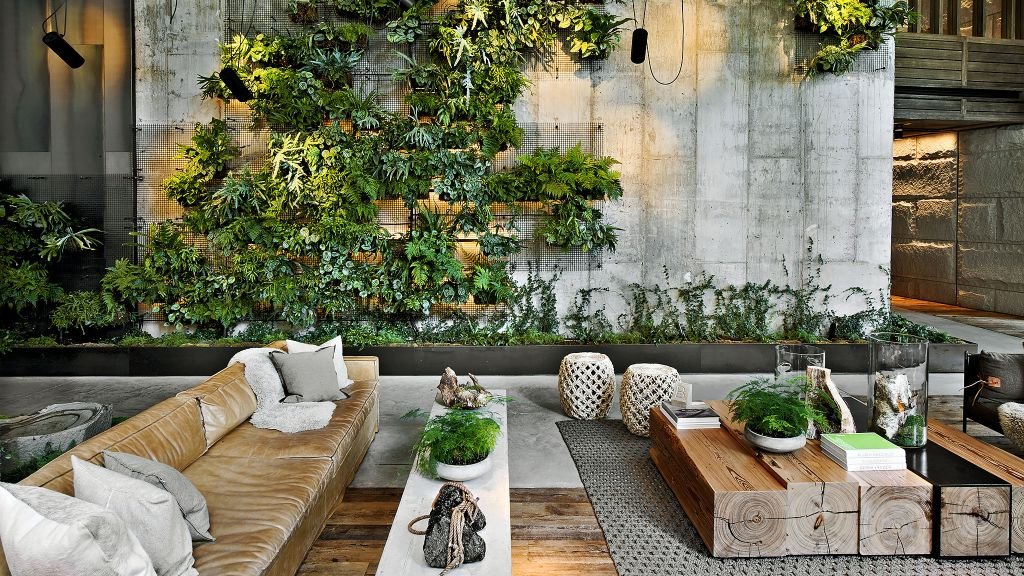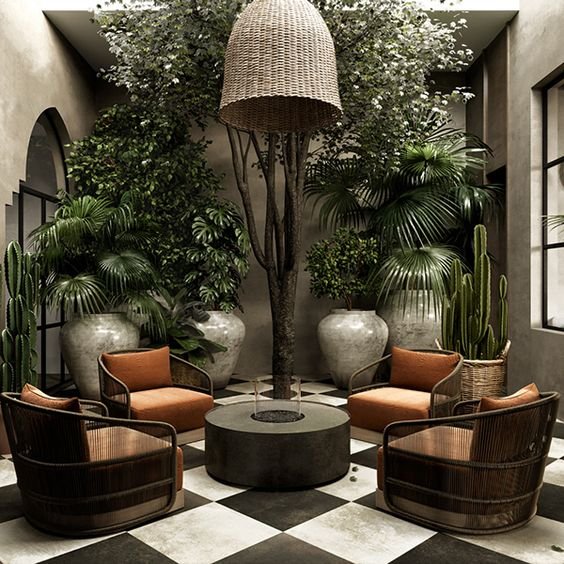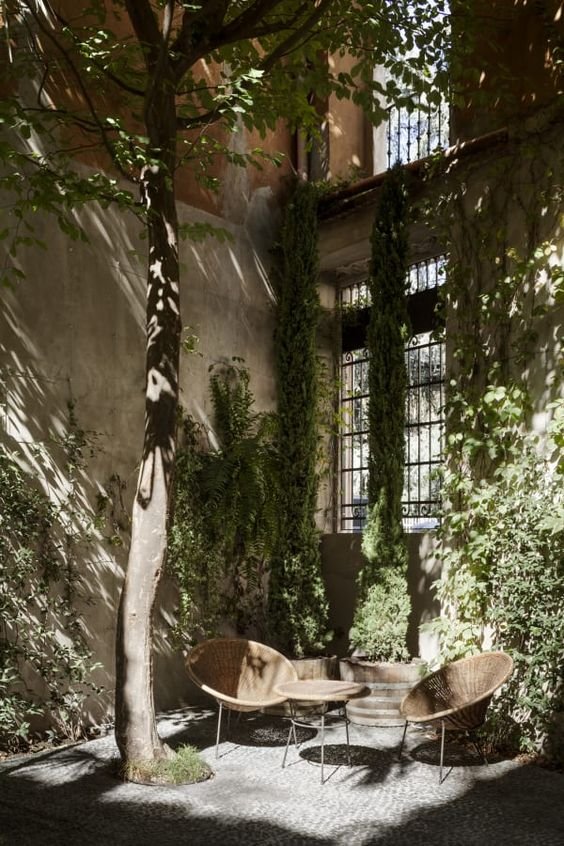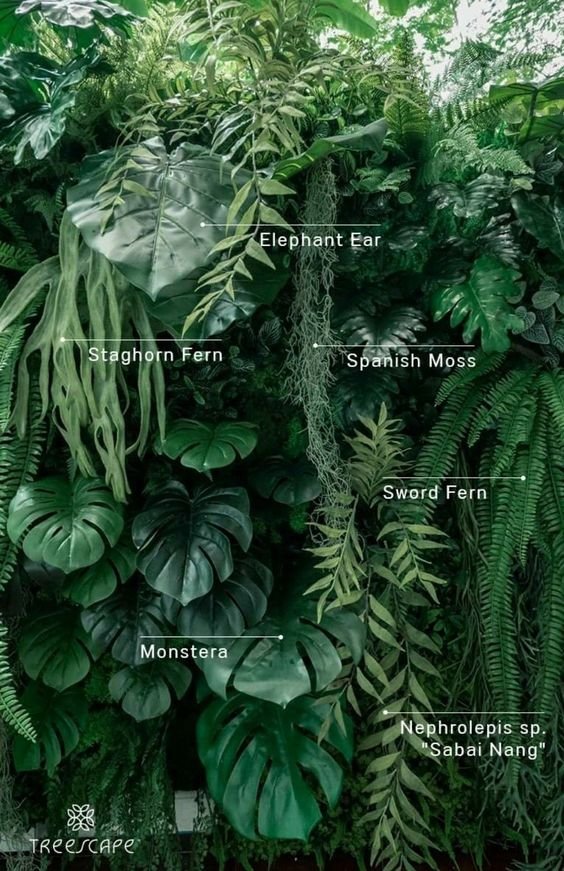Vertical Garden Design: How to Grow Plants With Limited Space
There are many reasons why people enjoy plants and gardening. Plants bring us joy and can improve our mood and reduce stress, while gardening is an activity with numerous health benefits.
Whether you love gardening or just want to incorporate more plants in your home it can be challenging if you’re short on space. A vertical garden may be the best solution for you.
Vertical gardens are perfect for a balcony, patio, or small yard, they also work well indoors. Keep reading to learn more about the benefits of vertical gardening, and how to create one for your home.
Harpers Bazaar
What Are the Benefits of a Vertical Garden?
Gardening alone and having exposure to plants offers numerous health benefits. It can boost your overall wellness as proponents of biophilic design support integrating nature into our living spaces.
Not only is vertical gardening a great way to enjoy your favorite plants, but it also offers other advantages that traditional gardening may not. Here’s why you should consider starting a vertical garden, either in your indoor or outdoor spaces.
With vertical gardening you can:
Grow more in less space
Grow them almost anywhere
Maintain them more easily
Add beauty and privacy
Grow a wide variety of plants
Yield cleaner crops
Receive health benefits
Create an eco-friendly home
If you want to get started with vertical gardening, keep reading to learn more about how to create one outside and indoors.
National Geographic
How Do You Create an Outdoor Vertical Garden?
Outdoor vertical gardens are great if you want to spruce up a fence or wall, create some privacy, or simply add more greenery to your outdoor spaces.
First, you’ll want to decide what kind of support structure you want. We’re outlining some options to consider below
Trellis, Arbor, or Pergola:
Great for perennial climbing plants and vines, like roses, wisteria, clematis, or honeysuckle
Help naturally add shade and privacy to outdoor living areas
Hanging Boxes, Planters, or Baskets:
Can be hung on a fence, wall, or trellis to plant a wide variety of plants
Great for sprucing up a fence or wall
Living Wall:
A vertical structure that contains a built-in growth medium for plants that is directly installed onto your wall
Also often incorporates an irrigation system
Can support a range of different plants, but evergreen varieties are usually preferable
Lush display makes a beautiful artwork-like feature
When deciding how and where to install your vertical garden you’ll want to consider a few factors like you’re light exposure, soil, and water needs. You’ll want to go with plants that have the same growth rate and requirements, to make things easier to maintain.
Because vertical gardens are usually more compact, plants have less soil, so they may need watering more often. When watering your plants keep in mind that gravity will pull water down, so the plants at the bottom will get more water than the plants at the top. A drip irrigation system may be the best solution to water your vertical garden.
Behance
How Do You Create an Indoor Vertical Garden?
If you want to incorporate more plants inside your home then think about creating a stunning indoor vertical garden. Not only does an indoor garden make your spaces feel lush and welcoming but it helps keep your indoor air quality healthy as plants help purify their air.
Some ideas include:
Edible herb or vegetable garden in your kitchen
Hanging plants
Wall planters
Shelving unit with potted plants
Hydroponic gardens
Living wall
If you’re interested in hydroponic gardening (growing plants without soil), then amazon has some great indoor options – including the Mindful Design Store, Gardyn, and Nutrabinns Store. They’re great for growing edible plants and provide optimal growing conditions with watering systems and LED grow lights.
A living wall is not only a stunning design feature but offers health benefits. Companies like Plant Wall Design based in NYC help design, install and maintain living walls for both residential and commercial buildings.
Archipanic
What Are the Best Plants for a Vertical Garden?
When planning your vertical garden you might be wondering, what plants will work best.
The short answer is many types of plants thrive in a vertical garden, so it’ll depend more on the location of your garden, environmental conditions, and how much time you’d like to spend on maintenance. For some planting and maintaining a garden is relaxing and therapeutic, while for others it’s more of a chore. So know if you want plants that need a bit more love and care or if you want easy low maintenance plants.
For outdoor gardening, the options are huge, for indoor gardening you are more limited by space and light conditions.
For indoor edible gardens herbs, leafy greens, and smaller fruits and veggies all work well.
Treescape
Need help designing and planning your vertical garden? At AHG Interiors we’re experts a designing indoor and outdoor spaces, including gardening and landscaping. Get in touch with us to discuss your project.





